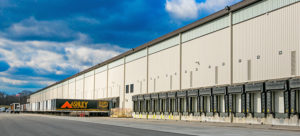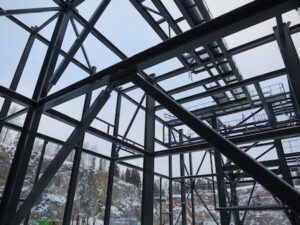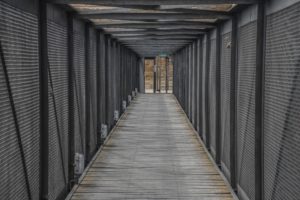
Steel vs. Conventional Building Materials: A Cost Comparison
The construction industry is constantly evolving, and with the advancements in building materials, it’s essential to stay informed about the latest options available to build your dream project. When it comes to construction, the cost is a crucial factor, and it’s essential to compare the costs of different building materials to choose the one that fits your budget best. In this blog, we will compare the costs of steel buildings with conventional building materials like wood, brick, and concrete.
COMPARE QUOTESThe Initial Cost of Steel Buildings
The initial cost of steel buildings is generally higher than conventional building materials like wood or brick. However, the cost of steel buildings is offset by several advantages, such as durability, energy efficiency, and low maintenance requirements.
The initial cost of steel buildings can range from $10-$50 per square foot depending on the size and complexity of your project. For example:
- A 40×60 steel building with a basic design will typically cost around $25 per square foot.
- The total cost of a 40×60 steel building will range from $15,000-$30,000.
- The long-term savings of steel buildings make up for their initial cost.
- Steel buildings last longer and require less maintenance, which translates into considerable savings in the long run.

Maintenance Costs
When it comes to maintenance costs, steel buildings are a clear winner. Steel is resistant to fire, pests, and weather damage, and it requires much less maintenance than conventional building materials like wood, which can rot, warp, or be damaged by termites.
COMPARE QUOTESLifespan
The lifespan of steel buildings is much longer than that of conventional building materials. Steel buildings can last for several decades, while wood or brick buildings may need to be replaced within 20-30 years. The longer lifespan of steel buildings translates into significant savings over the long term.
Energy Efficiency
Steel buildings are known for their energy efficiency. They provide better insulation than conventional building materials, which leads to lower heating and cooling costs. The tight seams and joints in steel buildings prevent air leaks, further reducing energy costs.
Customization
Steel buildings are highly customizable, allowing you to tailor the design and features of your building to meet your specific needs. This makes steel buildings ideal for projects that require unique designs or features. While with traditional buildings, you typically have to work within the confines of what is already available, designing steel buildings allows you to meet your exact needs.

Overall Cost Comparison
When it comes to an overall cost comparison, steel buildings are a better choice than conventional building materials like wood, brick, and concrete. Steel buildings come with an initially higher cost, however, they offer significant savings in the form of long-term durability, low maintenance costs, energy efficiency, and customization. With this in mind, steel buildings are the best choice for any project that requires a low-cost and high-quality building solution.
When comparing the costs of steel buildings with conventional building materials, it’s essential to consider not only the initial cost but also the long-term expenses, such as maintenance and energy efficiency. Steel buildings may have a higher upfront cost, but they provide numerous advantages, including low maintenance requirements, longer lifespan, and energy efficiency. In the end, the investment in steel buildings is a wise one, as it provides significant savings over the long term.
COMPARE QUOTESFactors that Affect the Cost of Steel Buildings
Steel buildings have become an increasingly popular choice for construction projects due to their durability, low maintenance, and energy efficiency. However, the cost of a steel building can vary greatly, depending on several factors.
Size of the Building
The size of the steel building is a major factor in determining the overall cost. Larger buildings require more materials, labor, and equipment, leading to a higher overall cost. The cost per square foot of a steel building typically decreases as the size of the building increases.
Location
The location of the steel building also affects the cost. The cost of materials and labor can vary greatly from one region to another, so it’s essential to consider the local market when budgeting for your steel building project. In addition, local building codes and regulations may also impact the cost of the project.

Customization and Features
The level of customization and the number of features included in the steel building design will also affect the overall cost. The addition of doors, windows, skylights, insulation, and other features will add to the cost of the building. It’s important to carefully consider the features you need and prioritize them to keep the cost under control.
Materials
The cost of steel building materials can also vary, depending on the quality and type of steel used. For example, using higher-grade steel will result in a higher cost, while using lower-grade steel may result in lower costs but may sacrifice durability.
Labor Costs
The cost of labor can also impact the overall cost of the steel building. The cost of labor will vary depending on the complexity of the design, the skills and experience of the workers, and the cost of living in the region where the building is located.
In conclusion, the cost of steel buildings can be influenced by several factors, including the size of the building, location, customization, and features, materials, and labor costs. By understanding these factors, you can make informed decisions about your steel building project and keep the costs under control. By carefully considering these factors, you can ensure that your steel building project stays within budget and provides you with a durable and efficient structure for years to come.
COMPARE QUOTES
Leave a Reply